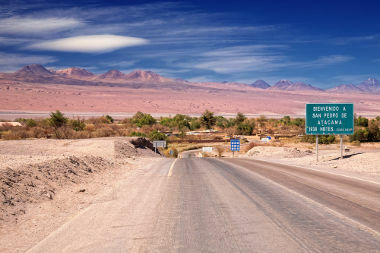Cultural diversity refers to the material and immaterial conditions that are transmitted and make up a given culture. It can manifest itself in different ways: in the way of life, values, art, gastronomy, etc. and in the formation of habits, customs and their regional and local diversities.
In the Brazilian context, it is important to remember that the country was originally formed by the contact between three cultures:
- The indigenous culture of native peoples.
- The African culture of different peoples enslaved and brought to Brazil.
- The European culture of Portuguese colonizers.
This junction took on different configurations throughout the occupation of the national territory and increased by immigration and by the different cultural manifestations of each location. This mixture made Brazil one of the countries with the greatest cultural plurality.
Brazilian culture is marked by the regionalisms that developed over time. The integration and intense exchange of experiences between the different regions make cultural diversity one of the main characteristics of Brazil.
Due to the large extension of the national territory, the Portuguese language and the common past are decisive factors in the formation of the so-called Brazilian identity.
However, the different locations also assume a variety of accents, behaviors and ways of life.
Thus, to understand what cultural diversity in Brazil is, it is necessary to understand the different cultural manifestations present in the regions that make up the country.
North region
The Northern Region of Brazil has a wide range of cultural manifestations and can be characterized by the influence of indigenous culture. Some of the cultural elements of the Northern Region of Brazil are:
Parintins Folk Festival
The Parintins festival is a traditional cultural event in the state of Amazonas and takes place in the municipality of Parintins, considered the largest boi-bumbá festival in the country.
The festival was created in 1965 and since 1966 has been the stage for the dispute between Boi Garantido and Boi Caprichoso.
Feast of the Círio de Nazareth
The Círio de Nazaré is a traditional Catholic feast in the North Region, celebrated since 1793, on the second Sunday of the month of October.
The event gathers 2 million people in Belém every year and is recognized as a cultural heritage of humanity by UNESCO.
Other cultural events in the North Region
In terms of cuisine, we have the famous river fish, such as the pirarucu and the baby fish; tucupi, a broth extracted from wild manioc; Brazil nuts and açaí. In recent years, Pará cuisine has gained more visibility and has been recognized internationally.
In music, the main rhythms of the region are: carimbó, lundu, marujada, marabas, lambada, guitarda and tecnobrega.
Read too: Northern Culture.
Northeast region
The Northeast Region of Brazil comprises 9 states and has a great cultural diversity. The Northeast has a vast artistic production, present in traditional literature and also in string literature, music and crafts.
Some more traditional cultural events in the region are:
Carnival
Carnival is a traditional festival across the country. The Northeastern cities where Carnival assumes a greater presence are: Salvador (Bahia); Recife and Olinda (Pernambuco).
Salvador Carnival is marked by the famous electric trios that drag millions of people through the streets to the sound of the rhythm that became known in the country as axé music.
In Recife, Carnival blocks are packed with frevo and maracatu. In Olinda, in addition to the traditional rhythms, the festivity counts with the presence of the famous giant puppets, which portray well-known figures in the city and in popular culture in general.
Feast of St. John (Festa Junina)
The Festa de São João is one of the most traditional cultural events in Brazil. In Campina Grande, Paraíba, the so-called “largest São João party in the world” takes place. Set to the rhythm of the forró, the June festivals also bring together hundreds of square dance groups.
Other cultural events in the Northeast Region
Northeastern Brazilian cuisine is famous for dishes such as: couscous, hominy, vatapá, caruru, baião de two, buchada de bode, acarajé, etc.
In music, the main rhythms are: axé, frevo, maracatu, forró, samba de roda, xaxado, xote, among others.
Read too: Northeast culture.
Midwest region
The Midwest region is the second largest region in territory in Brazil. It is known for its culture closely linked to land and agricultural production, having a vast folklore tradition and Pantanal culture.
Because it has boundaries with all regions of the country, and also because it has a strong integration with neighboring countries (Paraguay and Bolivia), the culture of the Midwest receives several influences.
The most famous cultural manifestations in the Midwest Region are:
Feast of the Holy Spirit
The Festa do Divino Espírito Santo is a traditional event in the region, especially in the city of Pirenópolis, in Goiás. The feast is a twelve-day celebration that has its most defining moment on Pentecost Sunday, fifty days after Easter.
In it, the coronation of the Emperor of the Divine takes place, a raffle held among the inhabitants of the city. The tradition is marked by the union of traditional and folk culture with the religious tradition of the Catholic Church.
Other cultural events in the Midwest Region
In terms of cuisine, the best known dishes are chicken with pequi (a very common fruit in the region), the Goiás pie and the famous river fish dishes, such as the Pintado and the Dorado.
In music, the region is famous for country music and its ramifications.
Read more about Midwest Culture.
Southeast region
The Southeast Region is the most populous region in the country with about 40% of the population and with a great concentration in its large urban centers. Also for that reason, it is a region marked by a great cultural diversity stimulated by the great migratory flow.
Some of the best known cultural events in the region are:
Carnival
Carnival is one of the biggest cultural events in the country and in the Southeast region. In addition to the traditional blocks, the party includes parades of samba schools.
These parades have the participation of thousands of members in each of the associations, in addition to spectators.
Barretos Boiadeiro Peon Festival
The party takes place in the city of Barretos, in the interior of São Paulo, and is the main one of many parties with the theme of rodeo and agricultural culture.
Other cultural manifestations of the Southeast Region
In terms of cuisine, Minas Gerais cuisine and its traditional products stand out, such as Minas cheese and cheese bread. Other famous dishes in the cuisine of the Southeast are: capixaba moqueca, virado à paulista and feijoada carioca.
In music, samba, born in Bahia, but with a particular development in Rio de Janeiro, stand out; bossa nova; funk and rap.
Learn more about Southeast culture.
South region
The Southern Region has a strong influence from 20th century European immigration. It also has characteristics acquired from the great contact with neighboring countries, mainly Argentina and Uruguay.
The main cultural manifestations in the South region are:
Oktoberfest
The German tradition of the beer festival has a lot of strength in the region, being celebrated in several cities. Blumenau, city of Santa Catarina, is where the biggest beer festival in the country takes place. In it, the month of October represents a mixture between German traditions and elements of Brazilian culture.
Grape party
The region's favorable climate allows the cultivation of a wide variety of grapes. Every two years, the National Grape Festival is celebrated in Caxias do Sul, a city in Rio Grande do Sul. The Italian tradition came to Serra Gaúcha through Italian immigrants and has been held since 1932.
Other cultural events in the South Region
In terms of cuisine, the quality of the wines and sparkling wines produced in the region stand out, as well as the traditional Gaucho barbecue. In addition, there is also one of the most outstanding traditions in Brazil, which is the consumption of chimarrão, yerba mate and hot water, taken in the gourd and commonly shared.
In music, in addition to the sertanejo, present mainly in Paraná, there are traditional rhythms such as fandango and vanerão.
Learn more about South Region Culture.
See too:
- cultural identity
- What is Culture?
- Brazilian culture
- Material and Immaterial Culture
- Popular festivals that are part of Brazilian folklore



